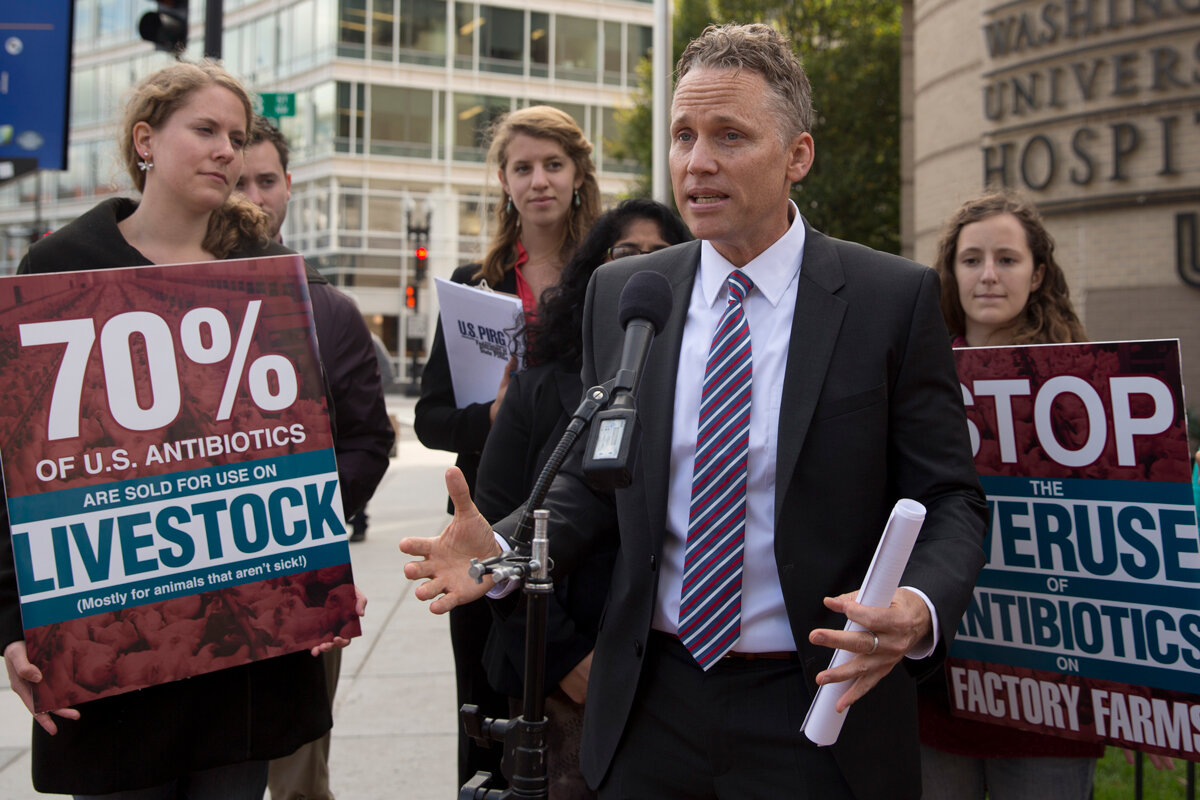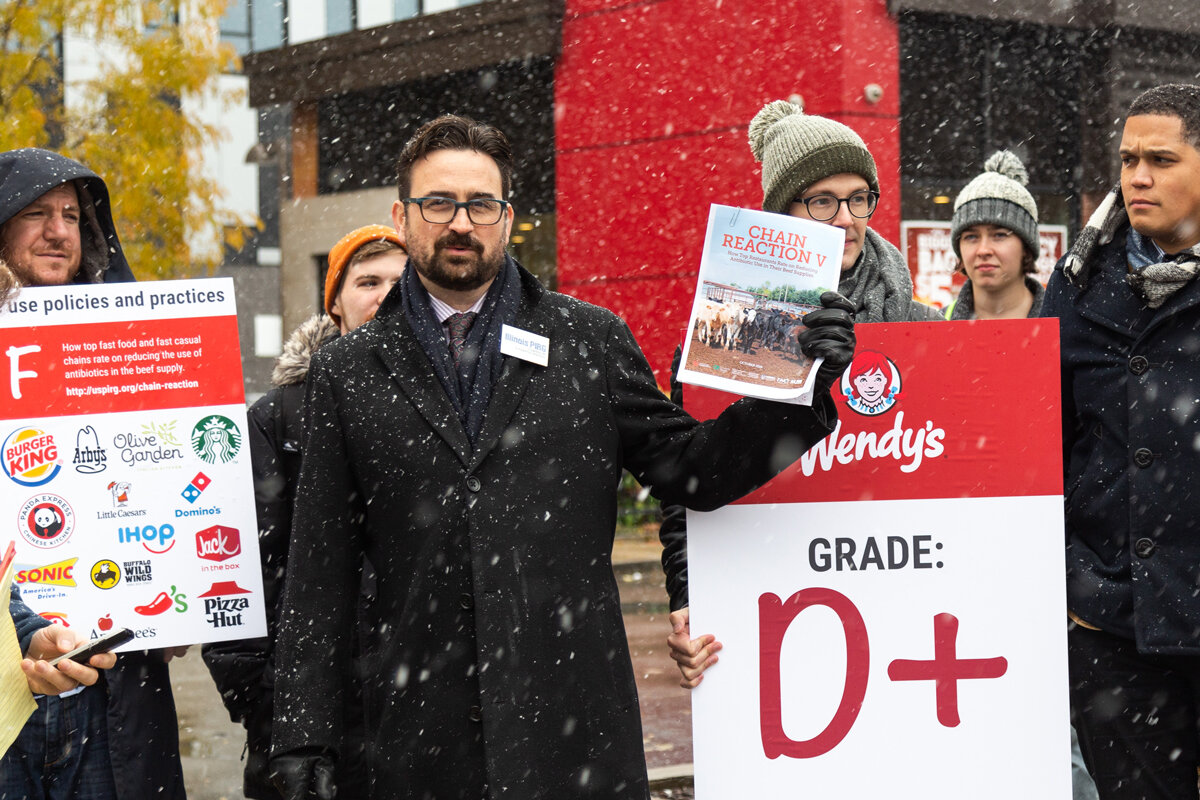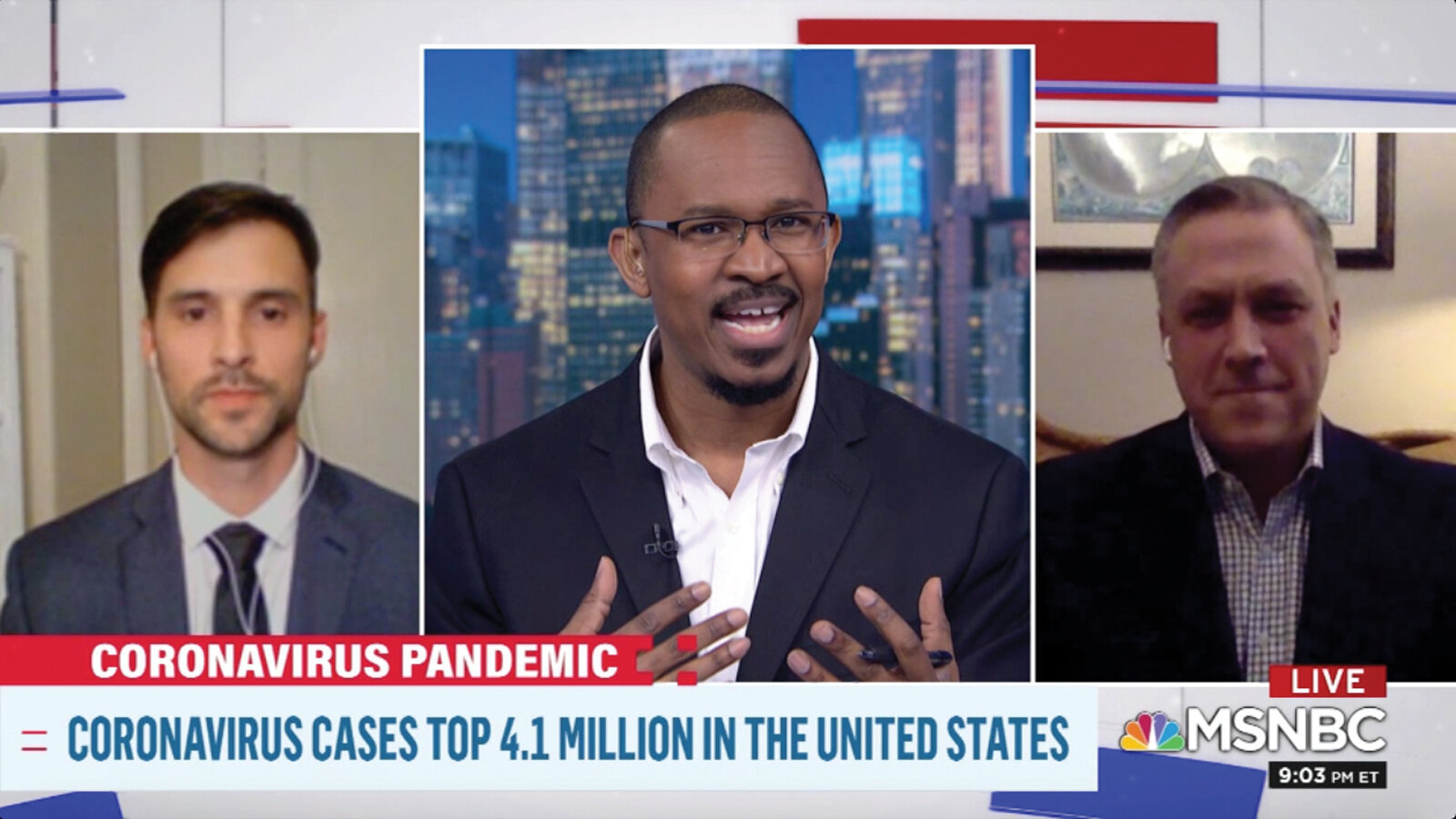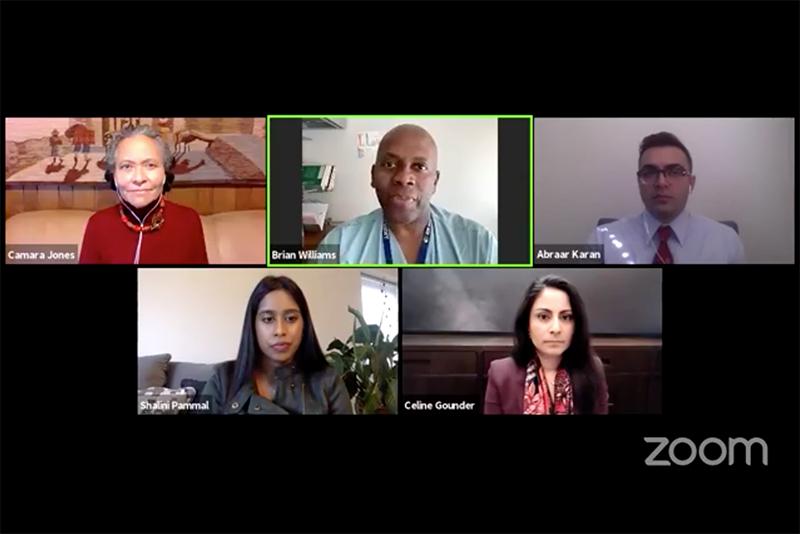
An ounce of prevention
Three efforts to put public health first
When health took a back seat to progress
The average American born in 1929 could expect to live 57.1 years.
Alexander Fleming had discovered penicillin the year before, but it wouldn’t become widely used to treat bacterial infections until 1945. There were no vaccines to prevent the spread of the flu or other deadly viruses. Americans put lead in their paint, in their plumbing materials and in the gasoline they put in their cars.
In some cases, Americans just didn’t know any better. It took time, effort and luck to discover vaccines, drugs and other medical breakthroughs.
In other cases, at least some Americans knew the risks. But public health took a back seat to economic progress.
Harnessing the means to live healthier lives
Nearly a century later, we have the means to live far longer and healthier lives — and for the most part, we are doing so.
An average American child born in 2020 can expect to live 77.8 years. We have antibiotics to treat everything from minor wounds to weakened immune systems due to cancer treatment. We eliminated smallpox in 1977 and polio in the U.S. in 1979. We stopped using lead in house paint in 1978, in gasoline in 1996, and in most new service lines in the 1980s.
Yet too often, our drive to produce as many products as cheaply as possible has resulted in unnecessary risks to human health, from toxic ingredients in products marketed to children or the overuse of antibiotics in the food industry. And we still are too slow to fully harness our great abundance to meet public health threats head-on, as we’ve seen in the ongoing crisis of lead contamination of drinking water and in the COVID-19 pandemic.
For 50 years, PIRG advocates and activists have called attention to threats to our health and wellbeing that we should not tolerate because they are preventable, unnecessary or at least capable of being mitigated and solved — if only we put public health first.
Video credit: VisualBricks via Shutterstock

Protecting the most vulnerable
To state the obvious, children are small.
Their minds and bodies are still growing and developing. They have a tendency to touch everything and to put a lot of what they touch in or near their mouths.
It’s no wonder that kids are more vulnerable to the toxic effects of many of the estimated 70,000 chemicals in commercial use in the United States.
Since the 1970s, PIRG has advocated strong protections for children against these toxic threats to their health.
Removing toxic art supplies from classrooms
Lead in ceramic glazes. A neurological toxicant called hexane in rubber cement. Toxic solvents in permanent markers.
These were among the toxic ingredients discovered in 1984 by CALPIRG staff in art supplies purchased by California school districts for use by more than 1 million students, including elementary school children.
CALPIRG’s report earned attention in The New York Times and USA Today and added new momentum to two bills in the state Legislature. The bills would ban the purchase of the most hazardous art supplies for elementary school use and require precautionary labels on all toxic art supplies.
Working with a coalition of educators and parents, CALPIRG won passage of the two measures, which were signed into law by Gov. George Deukmejian in September 1984. Four years later, responding to a campaign led by U.S. PIRG’s Pamela Gilbert, Congress adopted the federal Art and Craft Materials Labeling Act, which was modeled on the California laws.
Getting the lead out of drinking water
Many Americans were shocked and disturbed in 2015 when they learned that thousands of children in Flint, Michigan, had been exposed to high levels of lead in their drinking water.
There’s no safe level of lead for anyone, but it’s especially damaging to children, affecting how they grow, think, learn and behave. And Flint, as extreme and tragic as its case has been, represents only the tip of a very deep iceberg.
In 2016, samples of drinking water from almost 2,000 U.S. communities exceeded the Environmental Protection Agency’s action levels of 15 parts per billion (ppb) — levels that are already roughly 15 times higher than what's recommended by the American Pediatrics Association. As of 2021, roughly 9.2 million lead service lines remained in use all over the country.
Even though lead is particularly harmful to kids, many schools still deliver their water through lead pipes. The American Academy of Pediatrics estimates that more than 24 million American children are at risk of losing IQ points due to low-level lead exposure.
Our network’s own research echoes this cause for concern: In Arizona, 48 percent of the 13,380 school taps tested had lead in the water. We found similarly alarming stories in California, Illinois, and Washington state. Armed with this data, our staff have worked to organize concerned parents, teachers and community members to urge legislatures to act on lead remediation.
In California, we helped win strong new standards, adopted on Feb. 25, 2020, for lead in drinking water in the San Diego Unified School District. In Washington state, we celebrated the May 3, 2021, passage of the Bruce Speight Act — named after the former director of Environment Washington, who passed away in 2019 — to address lead in the state’s school drinking water.
Most recently, the Biden administration threw its support behind billions in funding for the removal of lead service lines as part of its proposed infrastructure plan.
Photo credit: Evgeniy Kalinovskiy via Shutterstock

PIRG Consumer Advocate Pam Gilbert explained the hazards posed by toxic chemicals in art supplies, 1985. Photo by staff.

CALPIRG’s Laura Deehan joined school district staff and decision-makers at an event to unveil San Diego Unified School District’s new plan to address lead in school drinking water in February 2020. The event was held at Clay Elementary, which was the pilot school to determine the best ways to get lead-free school drinking water. Image by J. Herron.

WashPIRG Campus Organizer Nicole Walter and Environment Washington Acting Director Pam Clough, the Speight family, and state Rep. Gerry Pollet (second from right) after a hearing in which Nicole, Pam and Heidi Speight all testified in favor of the Bruce Speight Act, which addresses lead contamination in school drinking water. Photo by staff.

Tackling the No. 4 cause of death
For Matt Wellington, stopping the overuse of antibiotics is personal.
Each time his wife has sought treatment for a recurring, potentially life-threatening infection, Matt, PIRG’s public health campaigns director, has wondered: What if this is the time the antibiotics don’t work?
Matt’s concern is shared by a growing number of doctors, public health experts and patients. Researchers estimate that up to 162,000 Americans die annually from antibiotic-resistant infections, making them the fourth leading cause of death in the country.
That’s why in 2014 PIRG launched our campaign to reduce the overuse of antibiotics in the poultry and livestock industries.
Despite concerns that the overuse of antibiotics spawns antibiotic-resistant superbugs, as late as 2016 an estimated 70 percent of medically important antibiotics sold in the U.S. were intended for use on animals — most of whom weren’t even sick.
A chain reaction sparked
To reduce the overuse of antibiotics on industrial-scale poultry and livestock operations (often called factory farms), PIRG targeted major restaurant chains, on the assumption that they are more sensitive to consumer demand.
The strategy worked. PIRG won our first commitment from McDonald’s. After a year-long campaign waged on college campuses, in communities and on social media, we delivered more than 30,000 petition signatures to the company’s headquarters. On March 4, the chain announced it would stop serving chicken raised on medically important antibiotics. Weeks later, Tyson Foods, a major supplier of chicken to McDonald’s, made its own commitment to phase out the routine use of antibiotics.
Next, we turned our focus to Subway. PIRG’s public health team organized more than 500 health professionals to sign a letter urging the restaurant to help protect public health. Among the signers was Dr. Lance Price of the Antibiotic Resistance Action Center at George Washington University, who would later join Matt in launching a podcast on the issue. In the fall, we delivered a petition signed by more than 100,000 of our supporters. On October 20, Subway announced a plan to phase out all meat raised on antibiotics.
Burger King, Wendy’s and other chains soon followed suit. By the end of 2016, seven of the top 15 highest-grossing restaurant chains in the U.S. had committed to phasing out routine antibiotics from their chicken supplies.
To keep the industry in the spotlight, in 2017, U.S. PIRG Education Fund joined our coalition partners in publishing “Chain Reaction,” an annual report card ranking America’s largest fast food and fast casual restaurants on their routine antibiotic use in their beef, pork and poultry supply chains. The report card has had an impact: When fast food chain BurgerFi received an “A” in “Chain Reaction IV,” the company beat out its competitors for a contract with the United States Air Force.
Since the launch of PIRG’s campaign, the share of antibiotics sold for livestock has dropped by 15 percent nationwide.
Photo credit: William Edge via Shutterstock

PIRG staff joined Dr. Lance Price in a press event about stopping the overuse of medically important antibiotics on factory farms in October 2014. Photo by Beverly Jensen Photography.

In 2015, PIRG’s Evan Preston and Matt Wellington were set to deliver 270,000 petitions from Americans — 110,000 of which PIRG activists collected — when Subway announced its plan to phase out antibiotic use from its entire meat supply. We ended up delivering a giant “thank you” instead! Photo by Pablo Robles

Illinois PIRG’s Abe Scarr released the fifth annual Chain Reaction report and scorecard of restaurants in October 2019. Photo by Robert Banez.

A slow-motion tragedy unfolds
In July 2020, COVID-19 was surging, again, across the United States.
More than 100,000 Americans already had died of the disease. Experts predicted another 100,000 would die by November unless the country took stronger preventative action. Yet the nation’s response was hindered by the denial and distractions of the Trump administration, the timidity of too many other political leaders, and the impatience of too many Americans to reopen the economy and “get back to normal.”
The vast majority of health professionals knew, and many economists agreed, that the only way to restore the economy was to forcefully address the pandemic itself. Yet their voices were not being heard.
Shut down, start over, do it right
On July 17, PIRG released a letter to the Trump administration, members of Congress and state governors, telling officials “the best thing for the nation is not to reopen as quickly as possible, it’s to save as many lives as possible.” The letter urged officials to close non-essential businesses, limit restaurants to take-out, require masks, and encourage people to stay home.
More than 1,400 health professionals, including Ezekiel Emanuel, chair of the health policy department at the University of Pennsylvania school of medicine, would sign that letter. The letter earned attention on The Rachel Maddow Show and in Forbes, among many other media outlets.
Misinformation and polarization conspired to keep the country’s response to the pandemic scattered and ineffectual. But by early September, 10 states had paused or rolled back reopening and six had established or expanded mask mandates. PIRG continued to make the case for a recovery that put public health first through the fall and winter, until at last vaccines were tested, approved and rolled out to the public.
To help health professionals better communicate information about the vaccines, on Jan. 19, 2021, along with Doctors for America, we brought together a panel of infectious disease experts for a public forum. Dr. Saad Omer, a vaccinologist, infectious disease specialist and director of the Yale Institute for Global Health, spoke on the panel.
“The first thing is an enabling environment for vaccination. So before you communicate, when you go to a vaccination place, are you treated with kindness, understanding, respect, ease?” he said during the panel. “The other thing is: Is the information clear? Is it accessible? So before we get to persuasion, just the basic information — and we are in an information deficit scenario even with health care providers.”
When the ‘right to repair’ is a matter of life-or-death
It was a nightmare scenario.
As ICU beds filled with COVID-19 patients in the early stages of the pandemic, biomedical technicians — or biomeds — across the country, tasked with maintaining hospitals’ medical equipment, found themselves unable to repair broken ventilators and other life-saving tools.
Many biomeds lacked access to manuals or the ability to run diagnostics or read error logs. These barriers were there for a reason: because they allowed equipment manufacturers to maintain control over the means of repair.
In normal times, these restrictions would be senseless, costly in terms of both dollars and human health. During a pandemic, they were unacceptable.
PIRG’s Kevin O’Reilly reached out to hundreds of biomeds. Eight in 10 reported having equipment on-site that they could not service because of restricted access. More than 300 signed on to our letter to Congress calling for action to stop manufacturers from withholding the means to repair medical equipment. Nearly 45,000 PIRG members and supporters signed our petition calling for action.
In response, three major companies made more service materials available — a change that we hope saved lives during the pandemic and one that will make it easier to save more lives in the years to come.
Photo credit: U.S. Marine Corps photo by Lance Cpl. Natalie Greenwood

PIRG’s Matt Wellington (left) joined a chorus of medical professionals that we organized in calling for America to shut down, start over and do it right. Credit: MSNBC

PIRG organized a series of webinars with health professionals about best practices for distributing the COVID-19 vaccine and communicating with the public about the vaccine. Credit: Staff.

U.S. PIRG organized more than 100 biomedical repair technicians (biomeds) to advocate in favor of legislation that would temporarily loosen cumbersome restrictions that slowed down repairs for the most critical medical devices, such as ventilators, for the duration of the COVID-19 pandemic. Credit: Terelyuk via Shutterstock.





